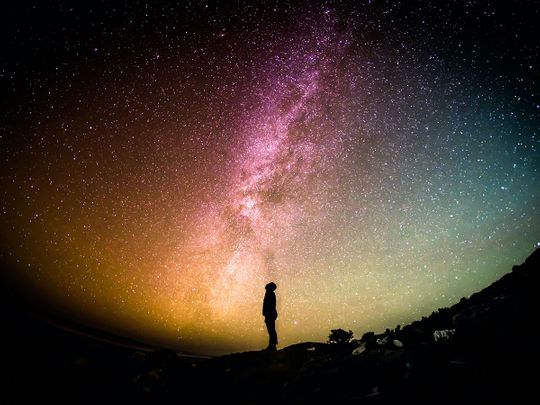
Most children know the nursery rhyme, “twinkle, twinkle, little star”. But if you want to get scientific, everything in that phrase is untrue. Although it’s not as catchy, it’s probably more accurate to say something like, “emit, emit, massive entity of gas!”
Click start to play today’s Crossword, where one of the clues hides the answer “star”.
A clear night sky seems to give us a sneak peek of the universe, with its many beautiful constellations. But do you know just how far you can see into the cosmos? And did you know that there are green stars? Here are a few facts about stars that are mindboggling:
1. Our sun isn’t as big or bright as we think
Our sun is 1.39km in diameter and about 5,500 degrees Celsius on the surface. Yet, according to nonprofit space and science news website Earth Sky, every star we see in the night sky is bigger and brighter than the sun – many by a large percentage. It’s considered to be an average-sized star, in relation to the hundreds of billions of stars in the Milky Way. In terms of luminosity too, there’s nothing extraordinary about the sun’s radiance. Of the 50 brightest stars visible to the human eye from Earth, the least luminous is Alpha Centauri – but it’s still 1.5 times brighter than our sun!
2. Stars don’t twinkle
Sirius, often the brightest star in the night sky, twinkles and flashes so frequently that sometimes, people on the Earth report it as an unidentified flying object (UFO). But the twinkling has less to do with the stars themselves, and more to do with the Earth’s turbulent atmosphere. As light from a star passes through the atmosphere, it goes through many layers of differing density, which has the effect of deflecting the light slightly. When we view the stars, this rapid deflection causes stars to ‘twinkle’. But if you saw the same stars from above the Earth’s atmosphere, they would remain bright, without a glimmer in sight.
3. Our view of the universe is enormous
On a clear night, the average person can see about 32 quadrillion kilometres – that’s 32,000,000,000,000,000km! It’s the approximate distance to the blue-white supergiant Deneb, in the constellation of Cygnus, and perhaps why Deneb can be seen from virtually anywhere in the inhabited world. Even more remarkably, under the perfect conditions for visibility, we can also see stars from the Andromeda and Triangulum galaxies – they are roughly 24 and 29 quintillion kilometres away (that’s 10^18km)!
4. Millions of stars in sight? Not really
Despite the way it appears, we cannot see millions of stars in the sky, because they are simply not close enough or bright enough. On an exceptionally clear night with no moon or any urban light pollution, a person with above average eyesight may be able to see about 2,000 to 2,500 stars at any one time, according to Earth Sky.
5. The sun is a green star
More specifically, our sun is a green-blue star, since its peak wavelength lies in the transition area on the light spectrum, between green and blue. This matters, because the temperature of a star is related to the colour of its predominant wavelength of emission – in the case of the sun, the surface temperature is about 5,800K, which places it as a green-blue colour. But when we view the sun, our eye-brain connection can detect only a small amount of visible light in the electromagnetic spectrum – it mixes the green with other colours within the range of the wavelength, and the star appears white.
Did you know these facts about stars? Play today’s Crossword and tell us at games@gulfnews.com.



